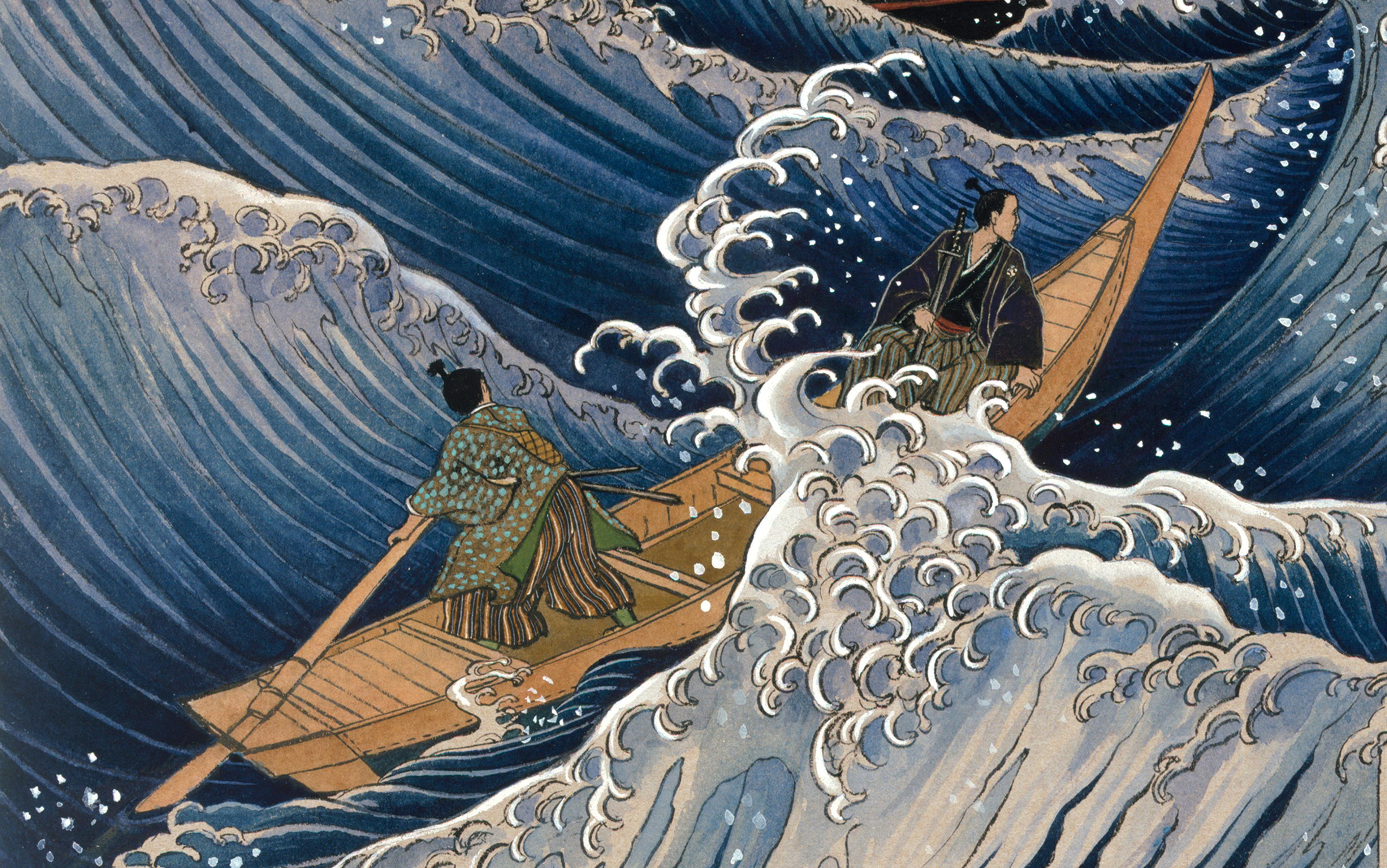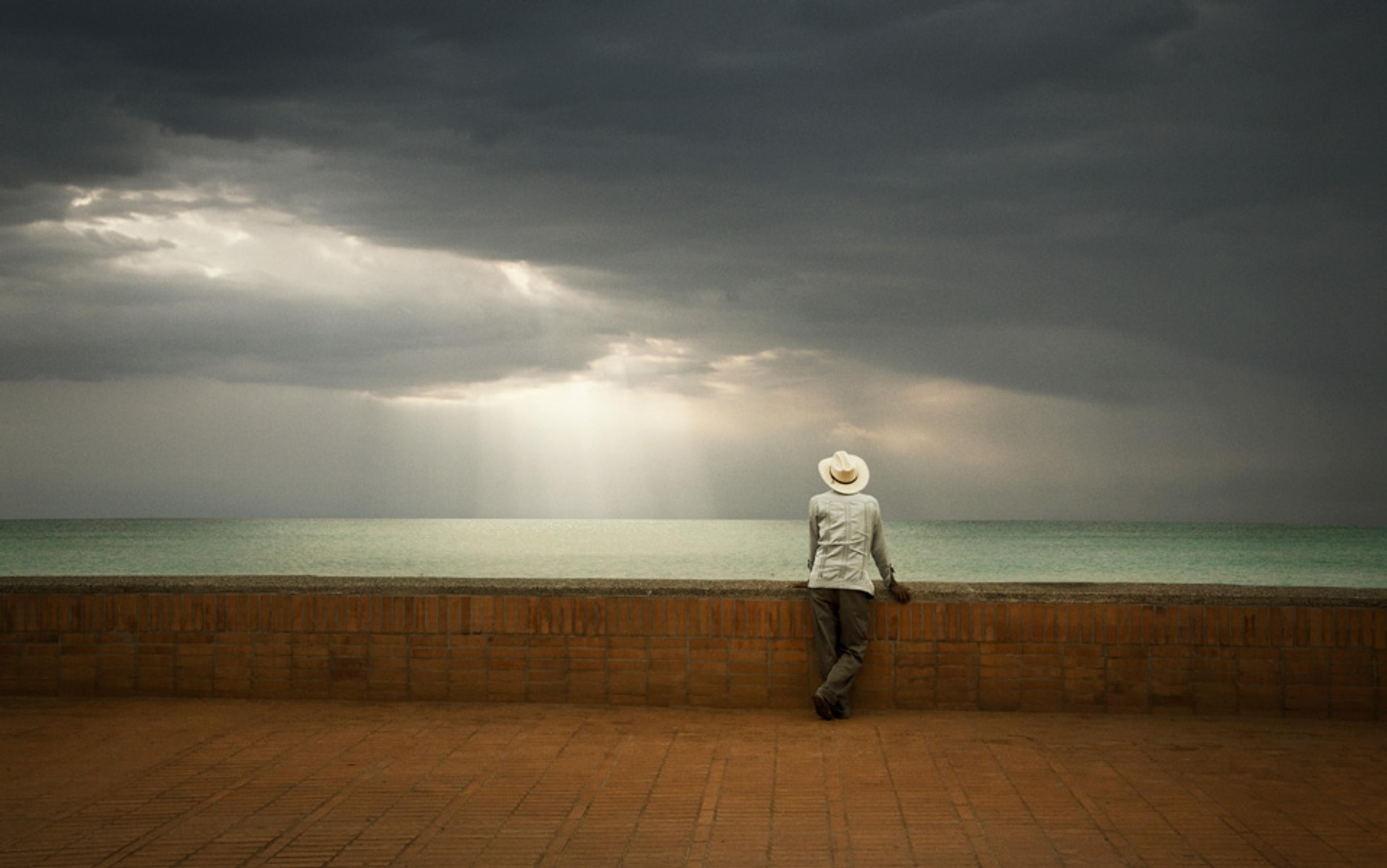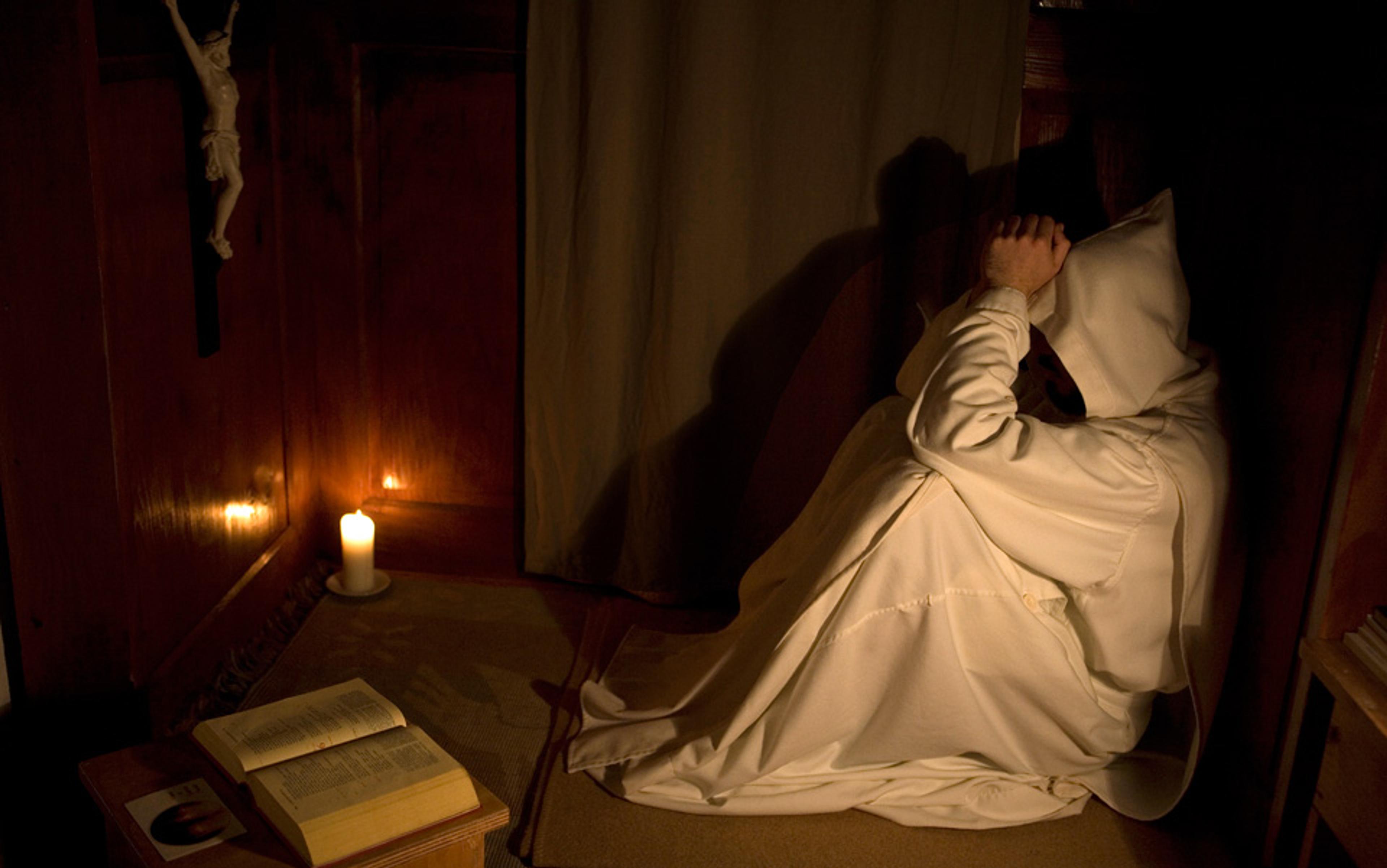Our society likes to portray obsessive-compulsive disorder (OCD) as a cute quirk, a goofy, if irritating, eccentricity. It is not. For the person undergoing OCD experience, it is a form of mental terrorism.
This terrorism takes the form of what psychologists call ‘intrusive thoughts’ — unwanted, painful thoughts or images that invade one’s consciousness, triggering profound fear and anxiety. This is the ‘obsessive’ part of OCD, and it can arise in even the most mundane circumstances. Sitting here typing, for example, I sometimes feel modest pain in my fingers, and my mind kicks into gear: You’re typing too much and causing permanent damage to your hands. Feel those little irritations at the second knuckle of your left ring finger? Those are the harbingers of arthritis. This is how it starts.
All around this mental tickertape, tension begins to build — a tidal lift that threatens to drown me if I don’t take immediate action. It’s hard to overstate just how world-shrinkingly claustrophobic this can feel, or just how much I am tempted to do to make the feeling go away. And here’s where the terrorists make their demands. Type slower. Put your wrist guards on. Stop typing altogether. Then you won’t have to feel this way. These are the ‘compulsions’ — ritual behaviours meant to alleviate anxiety.
These rituals can take many forms. For some people, it’s the stuff you see on TV — repeatedly checking to see if the door’s locked, counting the letters in words until a particular total is reached, avoiding the cracks in the sidewalk. I’ve experienced some of this, but for me, invitations to ritualise tend to be more purely mental — to ruminate endlessly, to replay anxiety-producing scenarios until I find a way to view them that will dissipate my anxiety (which, of course, never happens). The common thread are the rituals, the promise that there’s something repetitive and formalised that I can do to make things feel better.
Which brings us to religion. As in OCD, ritual plays a central role in all religious traditions. That’s not to say, of course, that ritual plays exactly the same role in OCD and religion. After all, religious ritual is an enormous arena of human activity, a means of expression for nearly every human want, need, and desire. It would be way beyond hubris for me — a 31-year-old whose experience of religious practice is largely limited to evangelical Christianity and Tibetan Buddhism — to pronounce on all of that.
But I’m struck by the fact that there is common ground between my private rituals, and the rituals that religions have invented. And from my own experience, growing up in evangelical Christianity, and now practising Tibetan Buddhist rituals, I have come to understand one thing. Some rituals are designed to help us ‘keep ourselves together’. Others are designed to help us fall apart. OCD rituals are the former, and so are many religious rituals. But Buddhist meditation offers a radical alternative.
The anxiety at the heart of OCD makes visible all the implicit certainties and background assumptions that I rely on — and then destroys them. You can imagine the panicky floundering, the thrashing desperation — and, above all, the willingness to reach for anything that looks remotely like a life raft.
Which, of course, is the ritual. Just read over the essay one more time. It couldn’t hurt to check the alarm again, could it? Why not drive at precisely the speed limit for the entire trip — that way, you couldn’t possibly get pulled over. The ritual doesn’t necessarily come packaged as a ritual. Rather, it arrives in the form of perfectly calibrated pain medication, the oh-so-rational solution to my confusion and disarray. When I’m feeling a little groundless it promises to get me back on my feet.
In other words, the rituals of OCD offer to restore the disrupted narrative of my life, to re-create a storyline in which all of my rollicking thoughts, feelings, and emotions can be integrated, and forward motion re-established.
Our minds are not the cognitive command rooms or centralised emotion-processing headquarters that we imagine them to be
As with OCD, so with religion. Many of the great anthropologists and sociologists of religion, including Émile Durkheim and Victor Turner, have pointed out the ways in which religious rituals serve to unite communities. But many religious rituals attempt to unify the individual as well – to restore a sense of coherence and continuity. This can take many forms: purging oneself of immoral acts, restoring a damaged relationship with a deity, and so on. In the evangelical circles in which I grew up, great emphasis was put on ‘getting right with God’ — on being reborn in Christ and committing to ‘walk with Him’. Doing so was a decisive act; it earned the believer a place among the saved and entry into Heaven.
Whatever the particular form, these kinds of rituals promise that we will no longer be groundless, disintegrated. To help deliver on this promise, OCD and much religious ritual depend on the belief that there really is some kind of entity, some thing at the core of our identity. Hindus might call it atman; those raised in the West might prefer ‘soul’. Whatever one calls it, many people firmly believe that somewhere within us there’s a centre, a seat of consciousness, a mental headquarters that processes experience and makes deliberate choices about how to move through the world.
By contrast with my evangelical Christian upbringing, Buddhism suggests that this is a profound mistake — that when we actually look for such an entity, a stable core to our being, there is simply nothing to be found.
Unlike OCD, or the rituals of my evangelical childhood, Buddhist rituals work not because they teach us how to stay together, but because they show us how to fall apart.
Because the solid ego is a fiction, it requires constant maintenance. We are constantly filtering our experience — excluding information, repressing our feelings, and ignoring our deep connections with other people — in order to defend and perpetuate a narrow understanding of ourselves. In other words, we’re constantly deceiving ourselves about who and what we are.
Why, you might ask, would anyone engage in this kind of self-deception? The contemporary Tibetan Buddhist master Chögyam Trungpa Rinpoche said that we are afraid of what we know to be true: that when we look to the centre of our own being, we won’t find anything to hold on to. In his words, we’re afraid that we don’t exist.
According to traditional Buddhist teachings, being is marked by impermanence. Nothing — no experience, no thought, no feeling, no form of self-understanding, and certainly no physical body — lasts forever. And even when things appear, they never stand alone. Rather, they are interdependent, composed of — and helping to compose — everything else.
The Abhidharma — a collection of traditional texts on Buddhist psychology — actually goes much further, describing how our own minds are composed of five basic elements (form, feeling, perception, concept, and consciousness). In other words, our minds are not the cognitive command rooms or centralised emotion-processing headquarters that we imagine them to be. Rather, the mind is a label that refers to nothing in and of itself, much like a crowd is nothing more than the coming together and interaction of individuals.
According to Buddhist psychology, we can actually witness the truth of these claims by observing how our own minds work. Buddhist ritual and practice seeks to expose us to our own mental processes — to show us exactly how we create and perpetuate the illusions that keep us in such pain.
Stories are simply composed of thoughts and feelings — like a string of popcorn on a Christmas tree
The centre piece of Buddhist ritual and practice is, of course, meditation. There are a huge variety of meditative traditions and practices both within and beyond Buddhism, and new variations seem to appear regularly (particularly as the market for Eastern spirituality has exploded in the West). To be clear, then, I’m going to restrict my comments to traditional shamatha meditation as taught by Trungpa Rinpoche. (For the record, I’ve been a practitioner in his lineage for the past year and a half.)
In shamatha, the practitioner simply focusses on the outbreath, following it as it passes the tip of the nose and dissolves into space. Thoughts arise, of course, and when the practitioner notices that his attention has been diverted, he simply takes note and returns to the breath.
Over time, the practitioner begins to notice the sheer quantity of thoughts and feelings that his mind is generating. He sees the way that these mental phenomena have a mysterious life of their own — that they arise from nowhere and then disappear again. He starts to realise that it is possible to see thoughts and feelings without judging them, reacting to them, or identifying with them.
As this happens, the practitioner begins to notice some of the stories he tells himself. Some of these are big stories — about the kind of person he is, the ‘meaning’ of his life, and so on. Others are much smaller — his narrative about why he should buy this toothbrush rather than that one, for example. But in both cases he starts to see that these stories are simply composed of thoughts and feelings — like a string of popcorn on a Christmas tree. In other words, he sees that his stories about himself are made-up, too. (Practitioners of contemporary cognitive behavioural therapy — CBT — might find such insights familiar.)
And as he recognises this, a kind of loosening occurs. Not only does he identify less with individual thoughts and feelings, but he also begins to rely less on particular ways of understanding himself. He feels less and less need to summarise his experience, to corral his raging flood of thoughts and feelings into a stable, permanent view of who he is. And as he begins to let go of his constant grasping after solidity, a fuller sense of who he is starts to emerge.
On a two-week solitary meditation retreat last month, I found out what happens when the two types of ritual collide: my OCD, crafted to hold tight to a false self, and my Buddhist practice, designed to take it apart.
I was at Dorje Khyung Dzhong, a retreat centre in a remote area of southern Colorado. It is comprised of eight retreat cabins strewn across 400 acres of otherwise-untouched wilderness. My teacher and another member of my meditation community were also there, in cabins about a half-mile from mine. Every three days or so, I would visit my teacher for an hour. Otherwise, we were each on our own.
The first week had been focussed and intense. I opened and closed each day with a series of chants and offerings; in between, I spent long sessions in sitting and walking meditation. My mind was slowing down; there were even a few moments in between sessions when I realised that I wasn’t thinking at all, and that nothing seemed to be missing.
However, on day six, I began to notice some pain in my knees. (I’d been nursing a low-grade knee injury for months, but things had been fine over the previous several days.) I couldn’t tell whether this was OCD spinning a story about my choices and their consequences — I’d neglected to stretch before the painful sitting session — or whether the pain was ‘real’. If it was an obsession, I certainly didn’t want to give in and ritualise. On the other hand, I didn’t want to be foolhardy with my body, especially with another week of retreat to go.
At some point, the rising mental tension simply forced a choice. I traded my meditation stool for a chair, hoping that this would put less pressure on my knees.
OCD often feels like a Choose Your Own Adventure novel, except that all the choices suck and all the adventures hurt
Whatever the truth of the matter, there was now a pattern in play. I had conceded some ground initially, and this made it all the easier it to concede again. I scrapped sitting meditation entirely, added more walking sessions, and introduced laying meditation.
Over the next few days, the pattern intensified. Even walking meditation ‘hurt’, so I limited myself to laying practice. I scanned my body for the faintest signs of discomfort; when I sensed the slightest twitch or twinge, my mind would flood with tension.
Even sitting at the table to eat or read became unmanageable. I constructed an elaborate contraption out of pillows and chairs, a form of improvised traction that I hoped would suspend me above my anxieties for a few minutes at a time. Just getting situated required a delicate set of bodily movements, each of which necessitated readjusting the equipment. I had built myself a prison for one.
It had become clear: my OCD rituals were preventing me from undertaking the Buddhist rituals I had come on retreat to practise. Staying had begun to feel masochistic and I left, along with my teacher.
It turned out that I was not ready for that retreat. But it did not undermine my faith in the value of meditation practice. OCD might have gotten the upper hand, but it’s been getting the upper hand for decades. It takes time to slow down and reverse such deeply entrenched patterns.
OCD often feels like a Choose Your Own Adventure novel, except that all the choices suck and all the adventures hurt. However, as I’ve begun to learn through Buddhist study and ritual, those ‘choices’ are illusory, and there’s no one being hurt. In fact, there’s no one there at all. The attempt to attain pleasure or avoid pain, to stay consistent with a storyline, to ensure some kind of outcome, to be somebody — this is what causes so much suffering.
That’s a hard message to hear, in part because our culture places such a heavy emphasis on the construction of an integrated self with a coherent story in life. We believe that deep down, there is some kind of solid, stable bedrock to our identity, some unshakable foundation that provides us with the capacity to control significant portions of our experience: to be who we really are, to be true to ourselves. Much religious ritual is designed to reinforce this view — to convince us that it’s possible to keep ourselves together, and to provide a method that promises to help us do so. And while there are important differences, OCD and its rituals are built on a similar worldview.
But that worldview isn’t true. It isn’t possible to keep ourselves together, because we aren’t one coherent thing. Instead, we are a kind of flux, a series of patterns and surprises, inextricably interwoven into the larger field of phenomena that we call reality. Which means that we can’t really let ourselves fall apart either, because we were never together in first place. What we can do, though, is recognise these truths and learn to be at peace with them.
Of course, it’s one thing to talk or write about these things. It’s another entirely to know them in your body, at the level of instinct. And here, according to Buddhism, is where meditation practice is essential. By sitting alone with ourselves, and by seeing what our minds are always doing, we begin to rediscover space, to remember that it’s possible to step off the conveyor belt and watch it go by.






